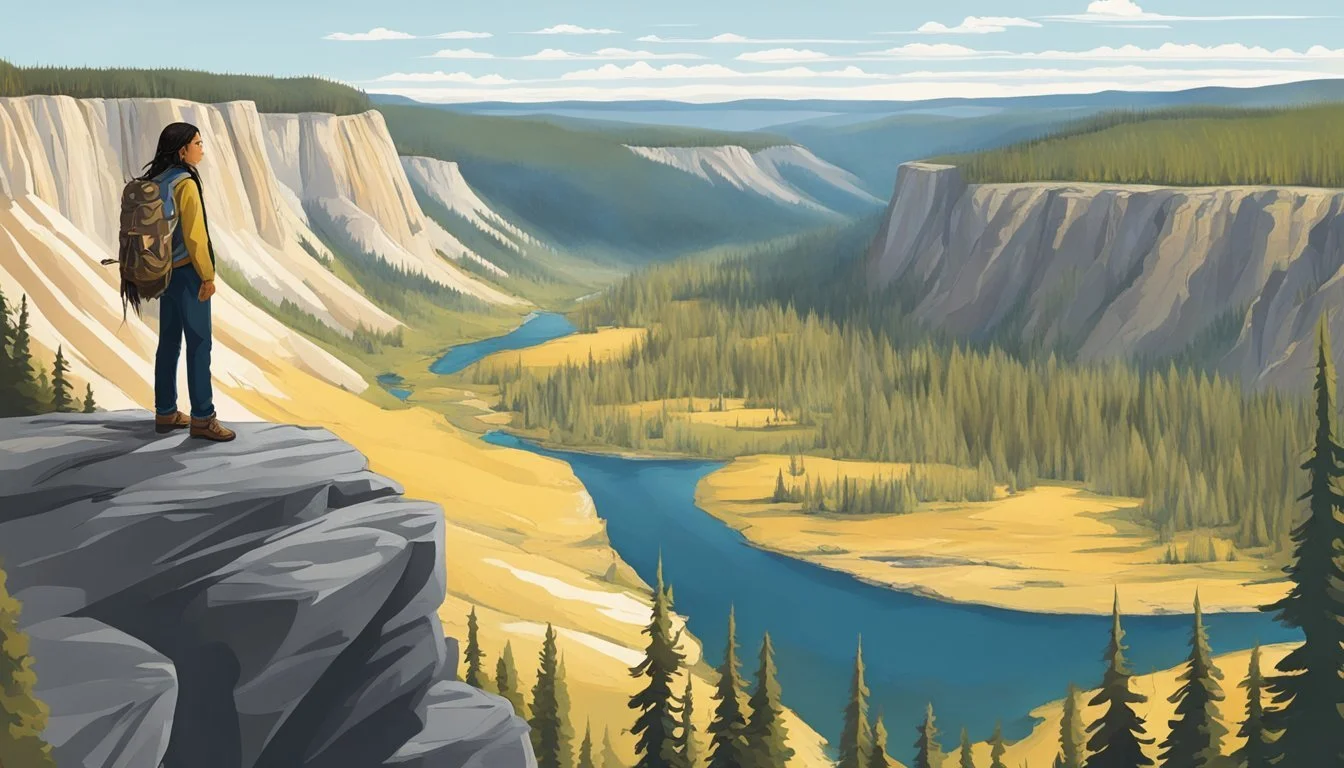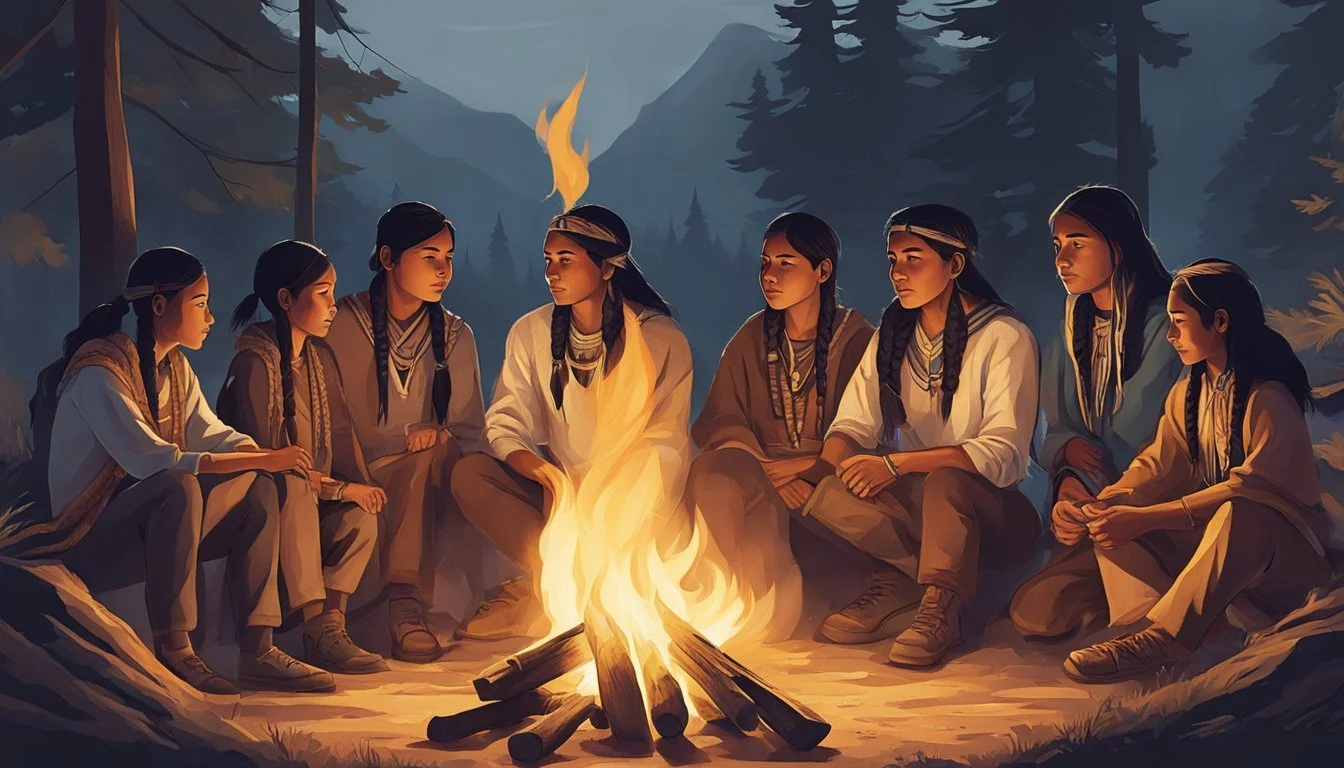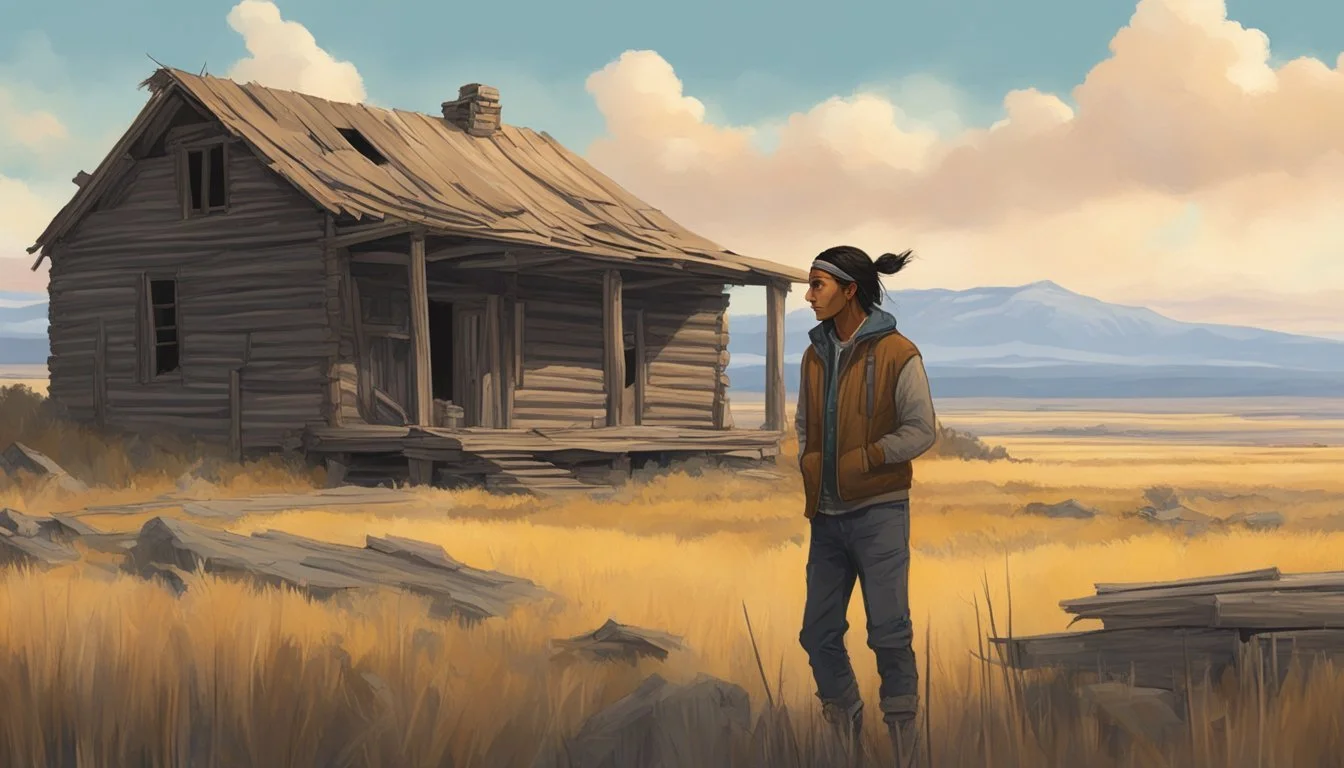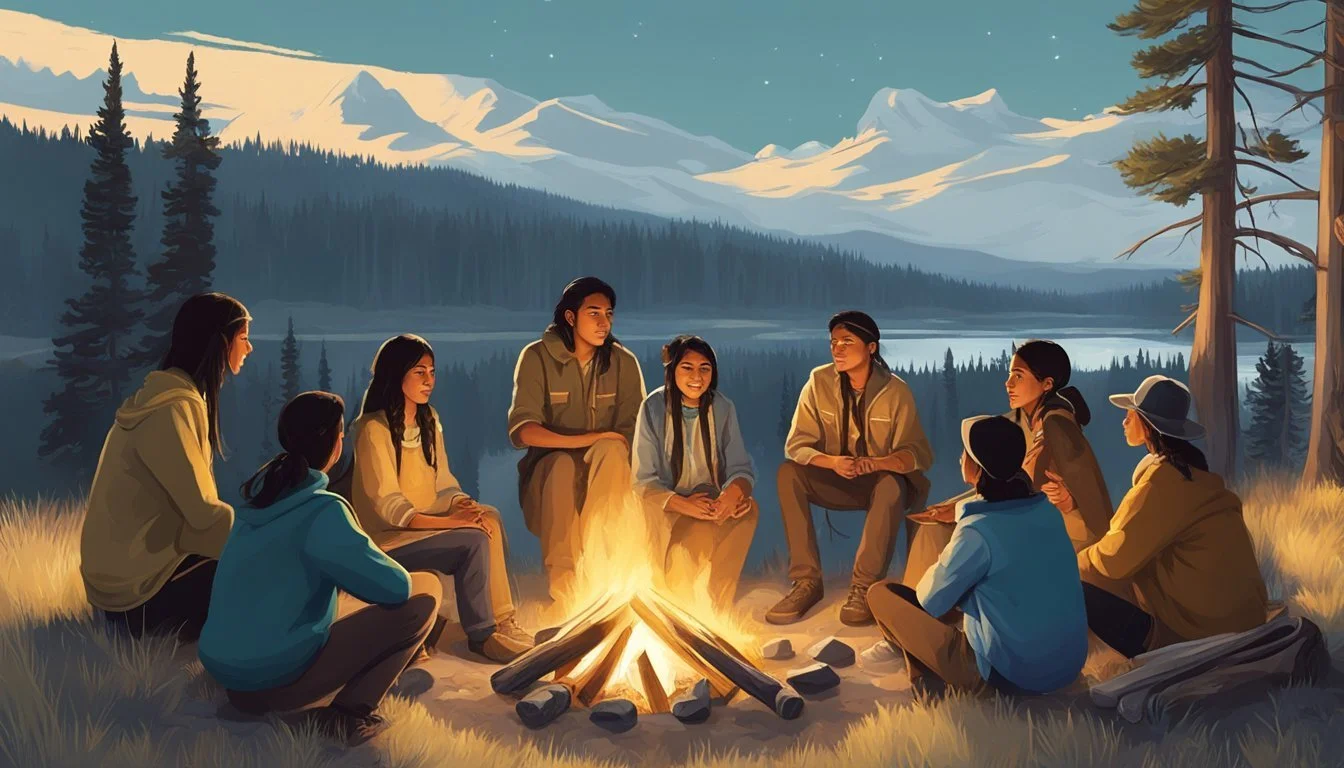Yellowstone's Portrayal of Native American Youth and Their Challenges
A Critical Examination of Cultural Representation
Yellowstone, the hit television series, has brought Native American representation to the forefront of mainstream media. The show's portrayal of Indigenous youth and their struggles offers a glimpse into the challenges faced by young Native Americans in contemporary society. Yellowstone attempts to depict the complex realities of Native American youth, including issues of identity, cultural preservation, and economic hardship.
The series introduces viewers to characters from the fictional Broken Rock Indian Reservation, showcasing their experiences and conflicts. Through these characters, Yellowstone explores themes of generational trauma, land rights, and the tension between traditional values and modern pressures. The show's creators have made efforts to include authentic Indigenous representation, although the accuracy of their portrayal has been subject to debate.
While Yellowstone has been praised for bringing Native American issues to a wider audience, it has also faced criticism for potentially reinforcing stereotypes. The depiction of Native American youth in the show raises important questions about the balance between raising awareness and the risk of oversimplification. As viewers engage with these portrayals, they are encouraged to consider the real-world implications and complexities of Native American experiences beyond the screen.
Representation of Native American Youth in Yellowstone
Yellowstone portrays young Native American characters navigating complex challenges and personal growth. The show explores their experiences within their communities and interactions with the broader society.
Evolving Character arcs and Growth
Monica Dutton, a young Broken Rock woman, exemplifies character development in Yellowstone. Her journey from reservation teacher to rancher's wife showcases cultural adaptation and personal strength. Tate Dutton, Monica and Kayce's son, represents a new generation straddling two worlds.
The series introduces other young Native characters like Avery, whose storyline touches on issues of identity and belonging. These portrayals aim to depict the multifaceted nature of modern Native American youth experiences.
Taylor Sheridan's writing emphasizes the characters' resilience and determination. The show strives to present these young characters as fully realized individuals with hopes, dreams, and struggles unique to their circumstances.
Challenges and Overcoming Adversity
Yellowstone depicts various challenges faced by Native American youth. These include:
Economic hardships on reservations
Cultural preservation efforts
Discrimination and stereotyping
Educational opportunities
Land rights disputes
The show portrays characters like Monica and Tate confronting these issues. Their storylines often involve balancing traditional values with modern realities. Yellowstone highlights the resilience of Native youth in overcoming obstacles.
The series also touches on substance abuse and its impact on reservation communities. It presents characters working to break cycles of addiction and create positive change. Through these narratives, Yellowstone aims to shed light on real-world issues affecting Native American youth in Montana and beyond.
Authenticity of Cultural Portrayal
Yellowstone's portrayal of Native American culture has garnered attention for its efforts to achieve authenticity. The show has taken steps to engage with Indigenous communities and cast Native actors in key roles.
Engagement with Native American Consultants
Yellowstone's production team works closely with Native American consultants to ensure cultural accuracy. These experts advise on traditional practices, language use, and historical context. Their input helps shape storylines and character development, adding depth to the show's Indigenous representation.
The consultants also guide the portrayal of spiritual ceremonies and customs. This collaboration aims to avoid stereotypes and present a more nuanced view of Native American life. By incorporating authentic details, Yellowstone strives to educate viewers about Indigenous cultures.
Casting of Indigenous Actors
Yellowstone features several prominent Native American actors in significant roles. Gil Birmingham, of Comanche descent, portrays Thomas Rainwater, a tribal chairman. His performance brings authenticity and gravitas to the character.
Kelsey Asbille plays Monica Dutton, a Native American woman navigating two worlds. While her casting sparked some controversy, her portrayal aims to highlight the challenges faced by Indigenous youth.
The show's commitment to casting Native actors extends to supporting roles and extras. This approach enhances the authenticity of scenes depicting reservation life and tribal gatherings. It also provides opportunities for Indigenous talent in the entertainment industry.
Filmmaking Perspectives on Native Issues
Taylor Sheridan's approach to Native American representation in "Yellowstone" draws from his experiences and influences. His screenwriting techniques aim to authentically portray Indigenous narratives and issues.
Taylor Sheridan's Vision and Influences
Sheridan's portrayal of Native American characters stems from his desire to shed light on Indigenous experiences. His work on "Wind River" focused on missing and murdered Indigenous women, demonstrating his commitment to highlighting pressing issues. Sheridan's approach differs from earlier films like "Dances with Wolves" and "The Revenant" by centering Native perspectives.
In "Yellowstone," Sheridan strives for authenticity by filming on real reservations. This choice reflects his belief in the importance of accurate representation. His vision extends beyond "Yellowstone" to other projects like "1883," where he consistently includes Native American storylines.
Screenwriting and Indigenous Narratives
Sheridan's screenwriting techniques aim to create complex Native characters. He avoids stereotypes and seeks to present multifaceted portrayals of Indigenous life. In "Hell or High Water," Sheridan explored themes of land ownership and historical injustice.
Behind the scenes, Sheridan collaborates with Native consultants to ensure cultural accuracy. This approach helps to address the lack of Indigenous talent in the industry. However, critics like Lily Gladstone have called some portrayals "delusional" and "deplorable," highlighting the ongoing challenges in representation.
Sheridan's work reflects a broader shift in Hollywood towards more nuanced depictions of Native Americans. His scripts often intertwine Indigenous issues with broader American narratives, aiming to educate audiences while entertaining them.
Character Studies and Performances
The Native American characters in Yellowstone bring depth and authenticity to the show through nuanced performances. Two key figures stand out for their complex portrayals of Indigenous experiences.
Thomas Rainwater's Leadership
Gil Birmingham delivers a commanding performance as Thomas Rainwater, the shrewd chairman of the Broken Rock Reservation. Rainwater navigates the challenging terrain between preserving tribal traditions and pursuing economic development.
His character embodies the complexities faced by modern Native American leaders. Birmingham infuses Rainwater with gravitas and subtle intensity. His portrayal highlights the delicate balance of honoring cultural heritage while advocating for his people's future.
Rainwater's interactions with the Dutton family reveal the ongoing tensions between Native tribes and white landowners. His strategic maneuvering adds layers to the show's exploration of power dynamics in the American West.
Monica Dutton's Cultural and Familial Conflicts
Kelsey Asbille portrays Monica Dutton, a character who straddles two worlds as a Native woman married into a prominent ranching family. Her performance captures the internal struggles of maintaining cultural identity while adapting to a new environment.
Monica's role as a teacher on the reservation underscores her commitment to empowering Native youth. Asbille conveys Monica's inner turmoil as she grapples with loyalty to her heritage and her love for Kayce Dutton.
The character's journey touches on themes of belonging and reconciliation. Monica's experiences reflect the challenges many young Native Americans face in bridging traditional values with contemporary realities.
Socioeconomic Factors in Native Storylines
Yellowstone's portrayal of Native American communities explores complex socioeconomic issues. The show highlights tensions between traditional values and modern pressures, depicting the challenges faced by Indigenous youth.
Struggle for Land Rights and Sovereignty
The fictional Broken Rock Indian Reservation in Yellowstone grapples with land disputes. These conflicts reflect real-world struggles for Native American sovereignty and territorial rights.
Developers and ranchers often clash with the tribe over land use. This tension showcases the ongoing battle between private property interests and Indigenous claims to ancestral lands.
The show depicts legal battles and negotiations between tribal leaders and outside entities. These storylines illustrate the complexities of Native American land rights in contemporary America.
Economic Development vs. Cultural Preservation
Yellowstone portrays the dilemma many Native communities face: balancing economic growth with cultural preservation. The Broken Rock tribe confronts difficult choices about resource exploitation and development.
Some characters advocate for embracing economic opportunities to improve living conditions. Others argue for protecting sacred sites and traditional ways of life.
The show explores how these decisions impact Native youth, who must navigate between two worlds. It presents the challenges of maintaining cultural identity while seeking economic stability.
Yellowstone's narrative touches on issues like unemployment, poverty, and limited opportunities on reservations. These elements provide context for the choices made by Native characters in the series.
Impact on Native American Viewership
Yellowstone's portrayal of Native American characters and storylines has elicited diverse reactions from Indigenous audiences. The show's representation efforts have sparked conversations about cultural authenticity and media influence.
Community Reception and Critiques
Native American viewers have expressed mixed feelings about Yellowstone's depiction of Indigenous life. Some appreciate the increased visibility of Native characters on mainstream television. Others criticize the show for perpetuating stereotypes and lacking nuance in its portrayal of tribal issues.
Indigenous women, in particular, have voiced concerns about their representation on the series. They argue that female Native characters often lack depth and agency.
Native American actors involved in the production have shared both positive and negative experiences. While grateful for the opportunities, some have reported feeling limited by the roles offered.
Contribution to Cultural Dialogue
Yellowstone has undeniably raised awareness of Indigenous issues among a broader audience. The show has prompted discussions about land rights, tribal sovereignty, and cultural preservation.
It has also highlighted the need for more authentic Native American representation in media. Some viewers have been inspired to learn more about contemporary Indigenous cultures and challenges.
Native American communities have used the show as a springboard to address misconceptions and advocate for more accurate portrayals. This has led to increased demand for Native-led productions and Indigenous storytellers in the entertainment industry.
Narrative Analysis and Criticisms
Yellowstone's portrayal of Native American youth faces scrutiny for its historical accuracy and representation. The show's creative choices in depicting Indigenous characters and issues have sparked debates about authenticity and stereotyping.
Historical Accuracy and Creative License
Yellowstone attempts to balance historical authenticity with dramatic storytelling. The show incorporates elements of Native American culture and history, but takes liberties for narrative purposes. Some scenes depict traditional practices and customs, offering viewers glimpses into Indigenous ways of life.
However, critics argue that certain plot points oversimplify complex historical issues. The show's portrayal of land disputes between tribes and non-Native settlers sometimes lacks nuance, potentially reinforcing misconceptions about tribal sovereignty and treaty rights.
Yellowstone's creators have consulted with Native advisors to improve accuracy. Still, the line between historical fact and fictional drama remains blurry in many storylines involving Indigenous characters.
Stereotypes and Nuanced Representation
Yellowstone's Native American characters present a mix of stereotypical and more nuanced portrayals. Some roles challenge common tropes, depicting Indigenous individuals as complex, modern people with diverse experiences and aspirations.
The character of Thomas Rainwater, for example, offers a multifaceted representation of a tribal leader navigating political and economic challenges. His portrayal moves beyond simplistic "noble savage" or "casino Indian" stereotypes.
On the other hand, some Native characters fall into familiar archetypes. The show has been criticized for occasionally relying on outdated notions of Indigenous spirituality or warrior culture.
Yellowstone's treatment of Native youth varies. While some young characters embody resilience and cultural pride, others struggle with issues like substance abuse, potentially reinforcing negative stereotypes if not handled sensitively.
Yellowstone's Place in American TV Landscape
Yellowstone has revolutionized the portrayal of rural America and Western themes on television. The show's success has paved the way for multiple spin-offs and influenced the broader TV landscape.
Contrasts with Other Media Depictions
Yellowstone stands out for its gritty, realistic portrayal of modern ranch life in Montana. Unlike romanticized Western depictions, it tackles complex issues like land disputes and political power struggles. The show's focus on the Dutton family, led by Kevin Costner's John Dutton, provides a nuanced look at generational conflicts and the challenges of maintaining a large ranch.
Yellowstone's popularity has sparked renewed interest in Western-themed content. It offers a contemporary twist on the genre, blending traditional cowboy elements with modern political and economic realities. This approach sets it apart from historical Westerns or urban-centric dramas.
Yellowstone and Its Spin-Offs
The success of Yellowstone has led to the creation of multiple spin-off series. "1883" explores the Dutton family's 19th-century origins, while "1923" follows an earlier generation of Duttons during Prohibition and the Great Depression. These prequels expand the Yellowstone universe, offering viewers a deeper understanding of the family's history and the evolution of their Montana ranch.
Spin-offs have allowed the franchise to explore different time periods and aspects of American history. They maintain the core themes of family, power, and land that made the original series successful. This expansion has cemented Yellowstone's place as a significant cultural phenomenon in American television.
Behind-the-Scenes Contributions
Native American involvement extends beyond on-screen roles in Yellowstone. Indigenous creatives contribute their expertise and cultural knowledge to enhance the show's authenticity and representation.
Native American Behind-the-Camera Influence
Mo Brings Plenty, a Lakota actor and cultural advisor, plays a crucial role in shaping Yellowstone's portrayal of Native American characters. He consults on scripts, costumes, and set designs to ensure cultural accuracy. The show employs Indigenous writers who bring personal experiences to storylines, adding depth to Native characters.
Cinematographer Mathias Herndl collaborates with Native consultants to capture landscapes that reflect Indigenous connections to the land. This visual approach honors the cultural significance of specific locations and natural elements in Native traditions.
Educating Cast and Crew on Indigenous Matters
Yellowstone implements a comprehensive cultural education program for its cast and crew. Native American elders and experts conduct workshops on Indigenous history, traditions, and contemporary issues. These sessions cover topics like tribal governance, spiritual practices, and the ongoing crisis of Missing and Murdered Indigenous Women.
The show's "Cowboy Camp" includes a Native American component, where Indigenous horsemen teach traditional riding techniques. This training enhances the authenticity of scenes featuring Native characters on horseback. Cast members also learn basic phrases in relevant Indigenous languages to improve pronunciation and delivery in scripted dialogue.
Future Directions for Indigenous Representation
Yellowstone has laid groundwork for more authentic Native American portrayals. The show's impact opens doors for expanded storylines and increased industry influence on Indigenous representation.
Potential Storylines and Character Expansions
Yellowstone could delve deeper into the lives of Native American youth on the reservation. A spinoff series focusing on Indigenous teens navigating cultural identity and modern challenges could resonate with viewers.
The show might explore traditional practices and language preservation efforts. This could showcase the vibrant, living cultures of Native communities rather than relying on stereotypes.
Storylines addressing real-world issues like environmental protection and tribal sovereignty could educate audiences while providing compelling drama.
Industry Influence and Changing Narratives
Yellowstone's success may inspire other productions to feature more Indigenous characters and storylines. This increased representation could lead to more diverse writing rooms and creative teams in the entertainment industry.
Native American actors from Yellowstone could leverage their visibility to advocate for authentic portrayals across media. Their influence might encourage studios to consult with tribal nations during production processes.
The show's impact may extend beyond television, potentially influencing how Native Americans are depicted in film, literature, and other forms of media.





